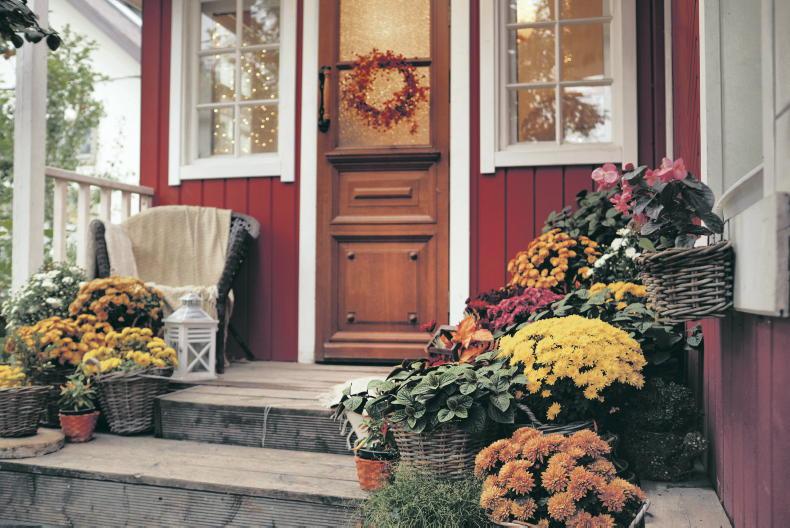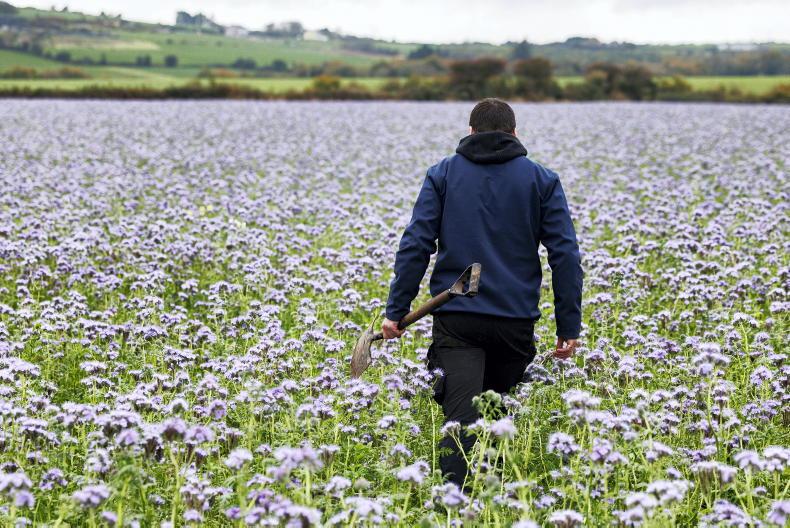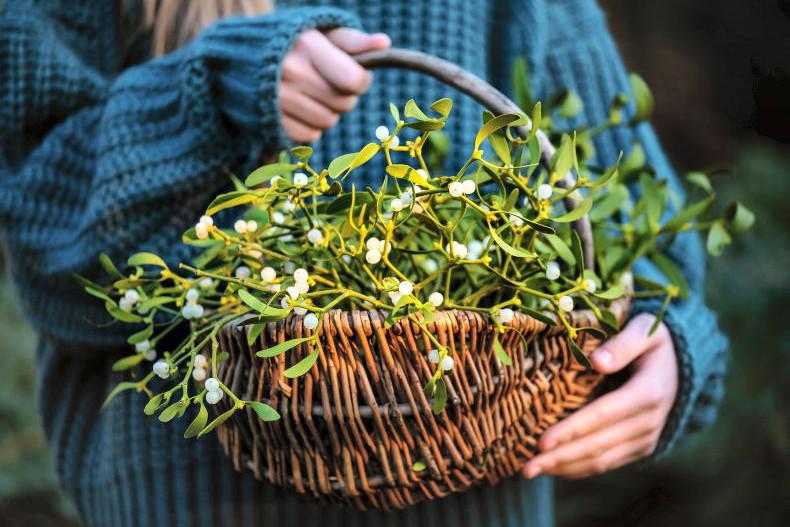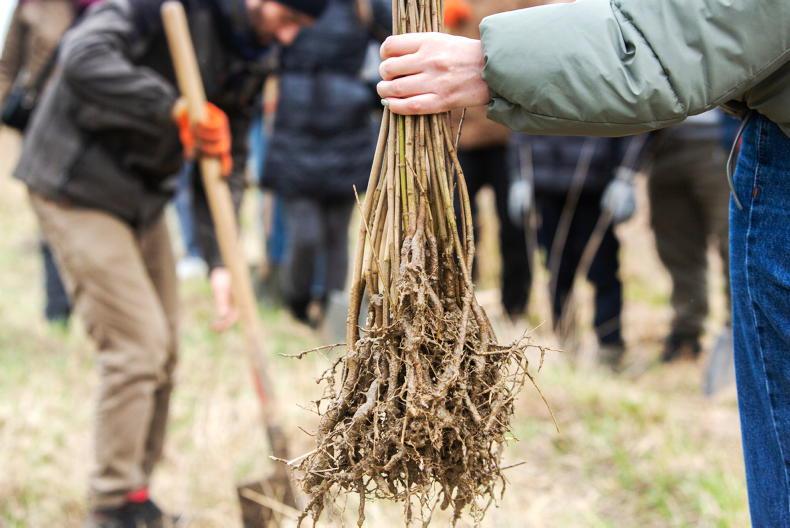Purple loosestrife is in flower in ditches and boggy fields all over the country. A native wildflower, it produces a group of tight spikes of intensely purple-pink flowers. In some cases, it will have spread to make a large clump, a spectacular sight. People sometimes pick the flowers for a vase – so its beauty does not always go unnoticed.
In most cases, wild plants that look pretty when growing in the landscape are not so good when used in the garden.
Their ‘wild’ look often translates into a certain roughness when seen in the more tame confines of the garden, but the purple loosestrife can hold up its head in any company, making very elegant show in a border of late summer flowers, setting off yellow flowers well.
And holding up its head is exactly what it does. The spikes of flowers are held boldly upright where the colour is most visible. It is quite a tall plant, reaching over waist-high, so there are few flower plants that are tall enough to rival it.

Loosestrife pink and purple forms.
The upright shape of the flowers is lively and the bright colour ensures that the plant is noticed. Although its display by the roadside is just as strong, we tend to dismiss plants growing wild as not suitable for the garden.
The purple loosestrife has much to offer gardens at this time of year, especially country gardens where a touch of naturalness is particularly appropriate. Given that it can fill space, it is ideal for larger gardens. The colour is very effective, giving a lift to the predominantly yellow late-summer flowers.
Purple loosestrife, Lythrum salicaria, is native to this country, most of Europe and the cooler parts of Asia. It is always found in marshy places, often in association with meadowsweet, another lover of moist soil. This explains its presence in roadside ditches where road water run-off or drains keep the soil damp.
It is an invaluable plant for a garden with a wet area or a streamside, where it could be planted with astilbes or meadowsweet – it would look great with pink meadowsweet – and yellow loosestrife, Lysimachia punctata. It could follow on from candelabra primulas, lysichiton and rodgersias, early flowering lovers of wet ground.
There are various forms of lythrum: some are from the wild species, such as ‘Feuerkerze’ or ‘Fire Candle’, with rosy red flowers; ‘Robert’ with bright pink flowers and ‘Happy’ which has dark red flowers.
Others are selections of a different species from further east, Lythrum virgatum, and if you think the wild form is too large, this kind is much smaller. A good kind is aptly called ‘The Rocket’.
Give these plants full sunshine and remove the flower heads before the seeds shed to prevent them from seeding. There is a tendency to spread by sending out shoots too, but this problem is usually easily contained by growing other moisture lovers. Excess parts can always be chopped out if the clump becomes too large.
One of the plants that invariably appears as a flowering pot plant in supermarkets during the summer is the gerbera, and a very attractive purchase it makes. The problem is that people find them difficult to keep going. Sometimes the purchaser does not even know that they are perennial and can be kept going after the initial flowering. The plant is often thrown out when the spectacular daisies have faded.

Gerbera.
It is available in shades of red, orange, pink and bright yellow. Each colour shade is very intense, which makes it a very eye-catching flower and it’s very prone to both over-watering and under-watering, though too much water is worse. A brown rot sets in at the leaf base and soon spreads through the crown of the plant causing it to wilt and die. When it runs short of water, it also wilts, but recovers. If the watering is kept in nice balance, reducing gradually as winter approaches, the plant will survive the winter on a window sill indoors.
The following spring it can be watered more plentifully, potted up and fed every two weeks during the summer.
Given this treatment, the gerbera will flower again and carry flowers over several weeks, because each flower is long-lived. If there is a greenhouse, porch or conservatory, so much the better because it likes a bit of heat. Watch for greenfly from time to time, because these can cause the plant to weaken badly and collapse.
Fruit, vegetables and herbs
There has been a lot of potato blight weather recently and control should be kept up, especially for maincrop potatoes. Make some late sowings of lettuce and radishes. Harvest and use, or preserve, vegetables and herbs in good time as they become ready.
Flowers
As the roots of plants in containers have filled the root space, they will need frequent watering, as often as every day if the weather is hot and dry. Warm weather improves the results from flowers in pots, most of them need it to perform to their best.
Trees, shrubs and roses
Roses have suffered from mildew leaf spot disease. It is time to clip hedges of all kinds before the wood gets tough. Any heavy cutting back should be left until the start of the growing season next year.
Lawns
Lawns have been looking well, having had some heavy showers. Some have suffered heavy leaching of nutrients and have not grown as well as they might. If a lawn is pale or yellowish, it probably could do with feeding, using a high-nitrogen fertiliser or lawn feed.
Greenhouse and house plants
Take cuttings of all kinds, especially deciduous shrubs now. Continue watering and feeding greenhouse plants, and house plants to keep them growing for the remaining part of the season. Be especially careful to water plants in pots or grow-bags regularly.
Read more
Geum gems
In the garden with Gerry Daly: Paris daisy
Purple loosestrife is in flower in ditches and boggy fields all over the country. A native wildflower, it produces a group of tight spikes of intensely purple-pink flowers. In some cases, it will have spread to make a large clump, a spectacular sight. People sometimes pick the flowers for a vase – so its beauty does not always go unnoticed.
In most cases, wild plants that look pretty when growing in the landscape are not so good when used in the garden.
Their ‘wild’ look often translates into a certain roughness when seen in the more tame confines of the garden, but the purple loosestrife can hold up its head in any company, making very elegant show in a border of late summer flowers, setting off yellow flowers well.
And holding up its head is exactly what it does. The spikes of flowers are held boldly upright where the colour is most visible. It is quite a tall plant, reaching over waist-high, so there are few flower plants that are tall enough to rival it.

Loosestrife pink and purple forms.
The upright shape of the flowers is lively and the bright colour ensures that the plant is noticed. Although its display by the roadside is just as strong, we tend to dismiss plants growing wild as not suitable for the garden.
The purple loosestrife has much to offer gardens at this time of year, especially country gardens where a touch of naturalness is particularly appropriate. Given that it can fill space, it is ideal for larger gardens. The colour is very effective, giving a lift to the predominantly yellow late-summer flowers.
Purple loosestrife, Lythrum salicaria, is native to this country, most of Europe and the cooler parts of Asia. It is always found in marshy places, often in association with meadowsweet, another lover of moist soil. This explains its presence in roadside ditches where road water run-off or drains keep the soil damp.
It is an invaluable plant for a garden with a wet area or a streamside, where it could be planted with astilbes or meadowsweet – it would look great with pink meadowsweet – and yellow loosestrife, Lysimachia punctata. It could follow on from candelabra primulas, lysichiton and rodgersias, early flowering lovers of wet ground.
There are various forms of lythrum: some are from the wild species, such as ‘Feuerkerze’ or ‘Fire Candle’, with rosy red flowers; ‘Robert’ with bright pink flowers and ‘Happy’ which has dark red flowers.
Others are selections of a different species from further east, Lythrum virgatum, and if you think the wild form is too large, this kind is much smaller. A good kind is aptly called ‘The Rocket’.
Give these plants full sunshine and remove the flower heads before the seeds shed to prevent them from seeding. There is a tendency to spread by sending out shoots too, but this problem is usually easily contained by growing other moisture lovers. Excess parts can always be chopped out if the clump becomes too large.
One of the plants that invariably appears as a flowering pot plant in supermarkets during the summer is the gerbera, and a very attractive purchase it makes. The problem is that people find them difficult to keep going. Sometimes the purchaser does not even know that they are perennial and can be kept going after the initial flowering. The plant is often thrown out when the spectacular daisies have faded.

Gerbera.
It is available in shades of red, orange, pink and bright yellow. Each colour shade is very intense, which makes it a very eye-catching flower and it’s very prone to both over-watering and under-watering, though too much water is worse. A brown rot sets in at the leaf base and soon spreads through the crown of the plant causing it to wilt and die. When it runs short of water, it also wilts, but recovers. If the watering is kept in nice balance, reducing gradually as winter approaches, the plant will survive the winter on a window sill indoors.
The following spring it can be watered more plentifully, potted up and fed every two weeks during the summer.
Given this treatment, the gerbera will flower again and carry flowers over several weeks, because each flower is long-lived. If there is a greenhouse, porch or conservatory, so much the better because it likes a bit of heat. Watch for greenfly from time to time, because these can cause the plant to weaken badly and collapse.
Fruit, vegetables and herbs
There has been a lot of potato blight weather recently and control should be kept up, especially for maincrop potatoes. Make some late sowings of lettuce and radishes. Harvest and use, or preserve, vegetables and herbs in good time as they become ready.
Flowers
As the roots of plants in containers have filled the root space, they will need frequent watering, as often as every day if the weather is hot and dry. Warm weather improves the results from flowers in pots, most of them need it to perform to their best.
Trees, shrubs and roses
Roses have suffered from mildew leaf spot disease. It is time to clip hedges of all kinds before the wood gets tough. Any heavy cutting back should be left until the start of the growing season next year.
Lawns
Lawns have been looking well, having had some heavy showers. Some have suffered heavy leaching of nutrients and have not grown as well as they might. If a lawn is pale or yellowish, it probably could do with feeding, using a high-nitrogen fertiliser or lawn feed.
Greenhouse and house plants
Take cuttings of all kinds, especially deciduous shrubs now. Continue watering and feeding greenhouse plants, and house plants to keep them growing for the remaining part of the season. Be especially careful to water plants in pots or grow-bags regularly.
Read more
Geum gems
In the garden with Gerry Daly: Paris daisy











SHARING OPTIONS